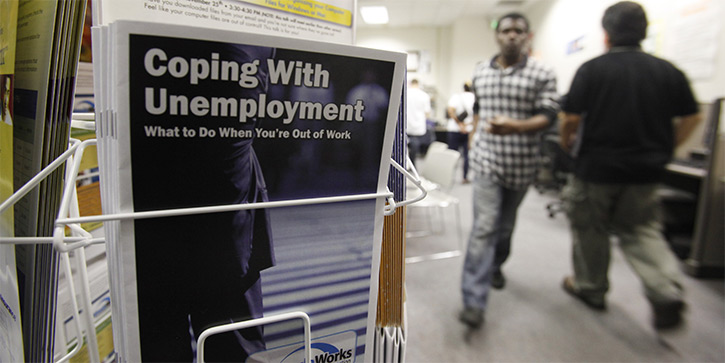
High Unemployment Is Good for These High-Dividend Stocks
- Robert Ross
- |
- The Weekly Profit
- |
- October 21, 2020
Stocks go up when things are bad. Just look at 2020.
COVID-19 pushed US gross domestic product (GDP) down 33% last quarter... the largest quarterly decline since the Great Depression:
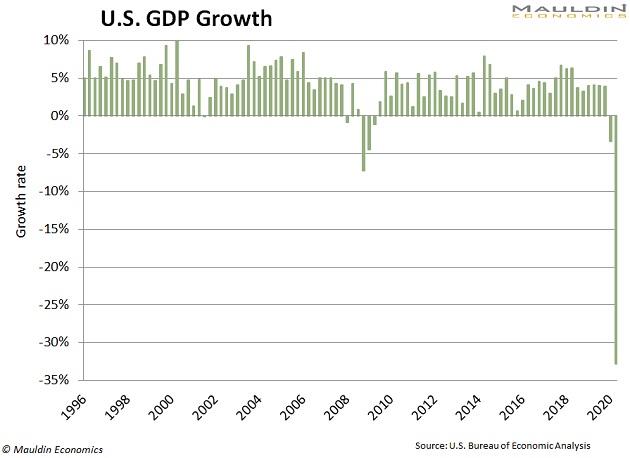
With so many people out of work, the unemployment rate shot as high as 14.7%. That was also the highest unemployment rate since the Great Depression:
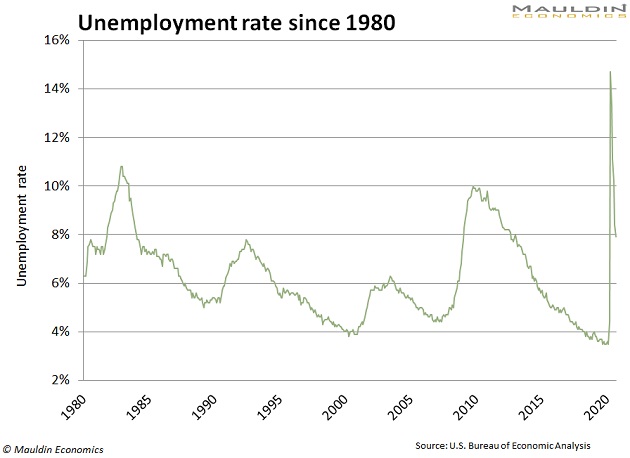
Despite the worst GDP and highest unemployment rate in 100 years, the S&P 500 currently sits near all-time highs:
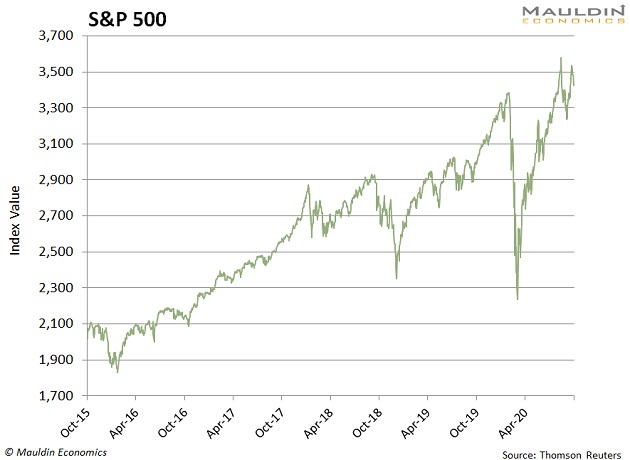
Most would see these three charts and scratch their heads. With so many people out of work, how are stocks trading at all-time highs?
Turns out, the real head-scratcher would be if they weren't.
Here's what I mean by that…
The Stock Market Is (Really) Not the Economy
Stocks and the economy are two separate mechanisms.
- Stocks are priced based on what investors think will happen in the future—how things will be.
- The economy is based on data—how things were.
That's why, even as 20.5 million people lost their jobs in April, the S&P 500 saw its best month in 33 years.
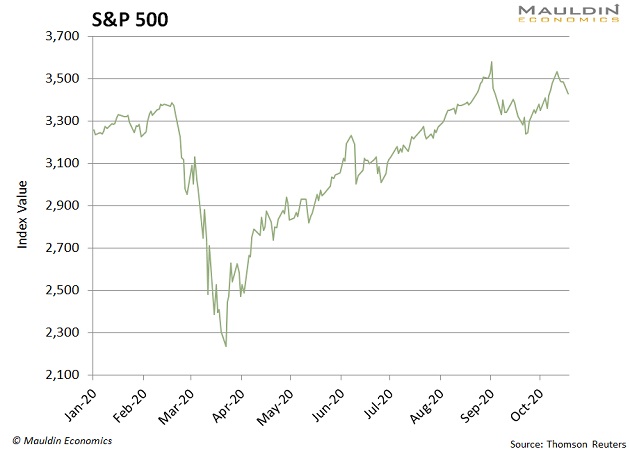
The unemployment rate—an economic measure—is a lagging indicator. That means the “current” unemployment rate reflects the rate from months prior.
Stocks rise even in the face of high unemployment because investors have already accounted for the terrible economic data and are now looking forward. That’s one of the key reasons why annual S&P 500 returns are actually higher during periods of high unemployment:

So with unemployment now at 7.9% and trending lower, investors are pushing stocks to all-time highs in anticipation that the worst is over.
In other words, trading activity in March predicted what things could look like today.
We can learn a lot about the future by looking backward, too.
We’ve Seen This Movie Before
Back in January 2011, the US economy was reeling from the global financial crisis. After the collapse of the housing market, the unemployment rate was above 9%:
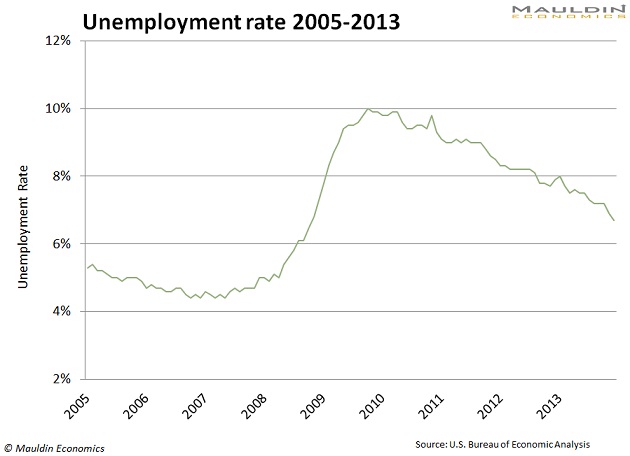
While nearly one-tenth of US workers didn’t have a job, the S&P 500 was trading near all-time highs. Not only had stocks rebounded from their 2009 lows, but they were in the early stages of the longest bull market in US history:
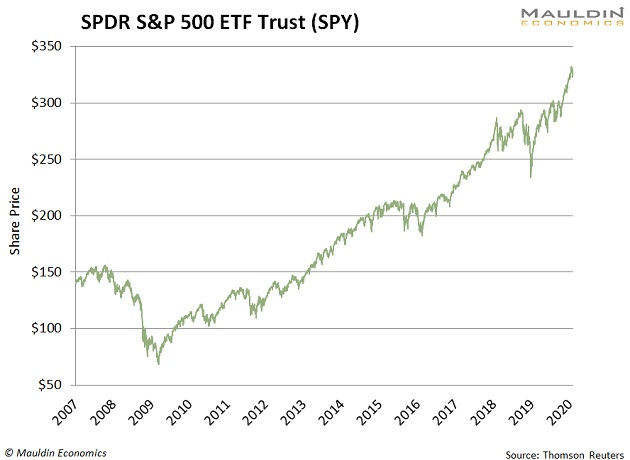
Back then, just like today, we had investors looking toward the future and seeing one that’s much brighter.
I'm not here to predict where employment numbers go from here. But I can tell you about three stocks that are poised to pay you for a good, long time—no matter what the next jobs report says.
3 High-Dividend Stocks to Ride This Trend
As history shows, high unemployment is not a recipe for a collapsing stock market. For select stocks, it’s actually a “buy” signal.
High unemployment is one of many reasons I think we’re in the early stages of a secular bull market. One that will gain strength as employment returns to pre-coronavirus levels and companies resume firing on all cylinders again.
That’s why now is a good time to add high-quality dividend payers to your portfolio.
One of my top picks right now is Hewlett Packard Enterprise (HPE). The company is a solid player in the booming cloud security market. The stock has underperformed in 2020. But since HPE’s 5% yield scored an 86/100 on my proprietary Dividend Sustainability Index, this huge dividend isn’t getting cut anytime soon.
Next on my list is Walmart (WMT). While most people think of Walmart as a classic brick-and-mortar retailer, Weekly Profit readers know it’s one of the fastest-growing e-commerce companies in the US. Walmart grew its e-commerce sales a massive 74% over the last year.

And there are few better options than WMT for income investors. Walmart isn't just a dividend payer—it's a Dividend Aristocrat. That is, a company that's raised its dividend for an incredible 47 years in a row. The company pays a modest 1.7% dividend yield, the Dividend Sustainability Index tells me is safe AND set to grow over the longer term.
Last on my list is online payments company American Express (AXP).
Amex has 114 million cards circulating worldwide. But those are mainly geared toward travelers, so the stock has taken a hit in 2020. However, the company gets paid every time a cardmember pays a bill or makes a purchase, so the long-term picture remains bright. And with a 1.8% dividend yield on a low payout ratio of 25%, it’s perfect for an income investor’s portfolio.

Robert Ross

